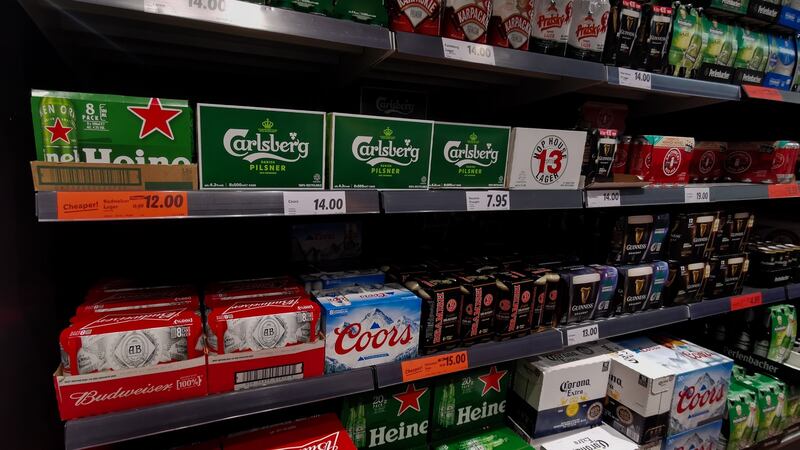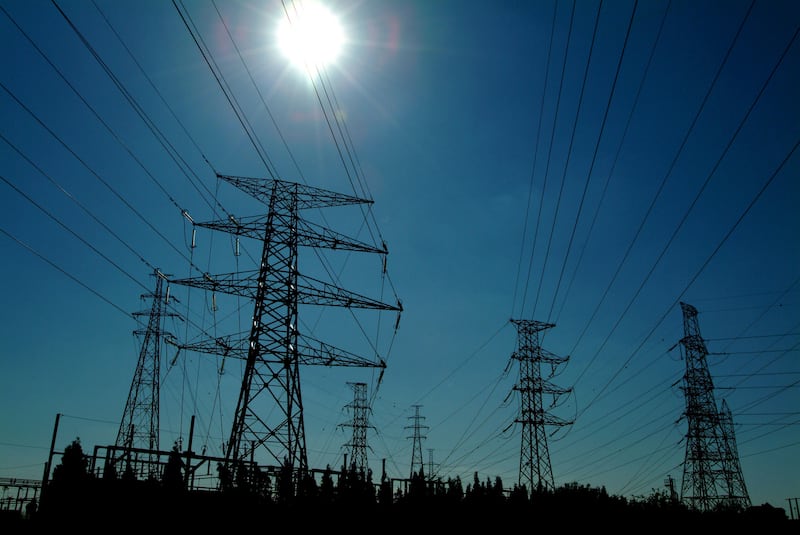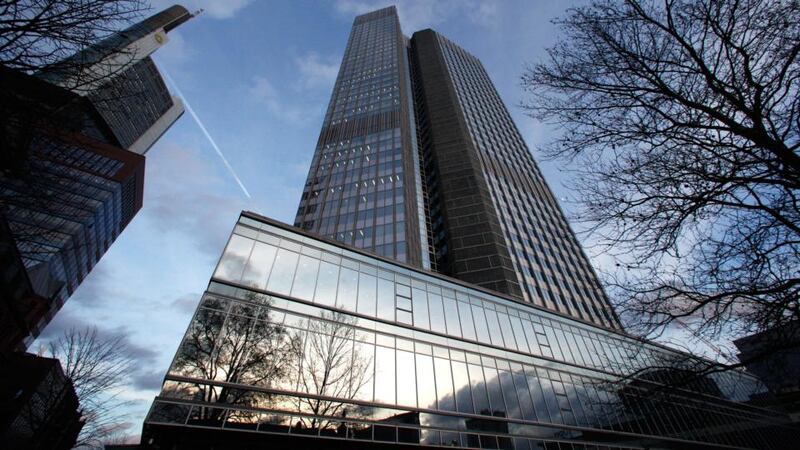It was supposed to be temporary but as we head into 2022, inflation – a bit like Covid-19 perhaps, only not as malignant – has become that unwelcome guest that is lingering that little bit too long.
Latest figures from the Central Statistics Office show that prices rose by 5.4 per cent in the year to November 2021 – the largest annual change in prices since June 2001. It's a trend seen across the western world, with recent data from UK think tank, the Resolution Foundation, finding that households are set to face annual increase of about £1,200 (€1,437) in their cost of living due to inflation.
Given the recent trajectory in prices here, it's hard to argue that the outcome will be any different in Ireland.
Luckily, from a macroeconomic perspective, inflation is a battle "we're well equipped to fight", says Neil Gibson, chief economist with EY Ireland, given the tight labour market, strongly performing tax revenues and savings in household bank accounts.
While wages are also on the increase, he says the main challenge from sharp price hikes may likely come in the form of social difficulties. “One of the great challenges it brings is what it does to people who can’t keep up with price rises in food, fuel and housing,” says Gibson. “That for Ireland is a very significant challenge.”
We’re unlikely to see a return to the low inflation levels of the recent past, he says. He expects inflation will cool off this year – but only to about 3 per cent – as structural changes, such as those in supply chains, maintain price pressures.
Alcohol
Some prices are rising due to structural issues and/or rising demand, others are down to Government policy. Take the recent hikes to alcohol prices, a process that first started with the enactment of the Public Health (Alcohol) Act 2018, and has subsequently seen the introduction of barriers in supermarkets, and the banning of multibuy deals. Since January 4th, a minimum price applies, which has substantially increased the cost of wine, beer and a host of spirits.

The new rules mean that the lowest price that can be charged for a gramme of alcohol is 10 cent. Given that a standard drink has 10g of alcohol in it, the lowest price that can now be charged for a drink in a supermarket or off-licence is €1.
A 500ml can of 4.2 per cent stout, for example, according to Drinkaware will cost at least €1.66, a bottle of wine with 14 per cent alcohol will not be sold for less than €8.28, a bottle of 37.5 per cent strength spirits will not be sold for less than €20.71, and a bottle of 43 per cent spirits will not be sold for less than €23.75.
The goal of the initiative is to reduce alcohol consumption. While success on this front remains to be seen, it will undoubtedly make alcohol more expensive in Ireland while benefiting those outlets selling it. The new higher prices will be retained by retailers.
The cost of energy has been rising for quite some time now, and it doesn't show any imminent signs of slowing down
Already you can see it on the shelves; Dunnes Stores has a pack of eight cans of Guinness selling for €13.30, matching the minimum price set by Government of €13.28, while a "slab" of 24 cans of Budweiser is now selling for €42 at SuperValu (a little bit more than the €40.80 price set by Government) and up substantially on the sub-€20 prices such goods such were selling for before Christmas.
The move also widens the disparity in the cost of alcohol in Ireland and farther afield, and is likely to push consumers north of the Border to seek out deals. A bottle of Yellow Tail Merlot, now sale for €12 in Tesco in the Republic costs just £7 (€8.36) in Sainsburys in the UK – a saving of some 44 per cent.
Energy
The cost of energy has been rising for quite some time now, and it doesn't show any imminent signs of slowing down. Customers will get some relief in their next bills: the Government is set to give everyone a €100 credit with legislation enabling this move on the way "very, very soon", according to Minister for Finance Paschal Donohoe.
However, it’s not going to be enough to offset the sharp rise over the past year.
As Daragh Cassidy of switching site Bonkers.ie notes, "Some households could end up paying well over €1,000 extra for their gas and electricity this year."

Customers of both Flogas and Panda Power will have seen the sharpest increases. According to Bonkers.ie, from October 2020 to December 2021, electricity prices at these providers rose by 71 per cent and 69 per cent respectively, and gas up by 55 per cent and 54 per cent. This is adding as much as €1,316 to an annual bill for dual customers.
October’s increase in carbon tax will add a further €18 or so to the average annual gas bill from May.
For Cassidy, a better option to help consumers would have been a temporary reduction in VAT to 5 per cent, which is similar to the rate in Britain.
Motorists are also feeling the pain at the fuel pump. According to AA Ireland, the cost of a litre of unleaded petrol has risen by 33 per cent to 172.5 cent from January to December of last year, and by 34 per cent for diesel in the same period. Given a tank size of 50 litres, the cost of filling such a petrol car has risen by €21.30 since the start of 2021.
Looking ahead, Gibson expects energy prices to fall back from their highs – but not back to pre-pandemic levels, citing the impact of geopolitical issues. “We do have fundamental changes to global energy supply . . . so we’re unlikely therefore to see a return to very cheap prices,” he says.
Interest rates
Inflation is not only increasing in Ireland; it is rising across Europe, which could put pressure on the European Central Bank to finally raise interest rates from their current level of zero.
Latest figures show that inflation rose by 5 per cent at the end of last year – a sharp contrast on 2020 when inflation came in at less than 1 per cent. But despite this, interest rates have remained at zero, with the ECB continuing to espouse the view that inflation is temporary.
This may change: already the US Fed has suggested dropping the term “transitory” from price pressures that are now looking more persistent.

Given that Gibson says much of the inflationary pressures are down to structural changes, rather than just rising demand, he now expects the ECB to make a move earlier than the projected 2024/25, although he doesn’t expect “much of an interest rate rise” in the short term.
Should interest rates rise, Irish borrowers will be hit. And, with Irish homeowners already paying about one percentage point more in interest on their mortgages than their counterparts across Europe, any increase in rates will hurt Irish borrowers more.
Consider a €300,000 mortgage over 30 years on a rate of 2.6 per cent. Monthly repayments currently come to about €1,196: a one percentage point increase in rates to 3.6 per cent would send this repayment up by €158 a month. Not only that, but it would also make it more difficult for putative home buyers to qualify for a mortgage due to stress testing based on interest rates.
Irish homeowners will be protected from an increase to a certain level thanks to the high level of fixed-rate mortgages; however, once these terms come to an end, homeowners would be subject to significantly higher rates.
Everyday living
And it’s not just certain items where prices are rising; it’s everywhere. Take your television package. Just before Christmas Sky increased its TV packages by 3.4 per cent.
Or furniture. Swedish low-cost furniture giant Ikea has increased prices across its Irish stores. This means that the store's ever-popular Billy bookcase will increase in price by about 11 per cent up to €50.
Households are also facing a sharp rise in the cost of holidays at home, after recurrent closures and openings
Or how about motoring. Motorists are already paying more to fill up their tanks at the fuel pump, but potential car buyers are also facing price hikes. A study by DoneDeal in October found that the cost of second-hand cars in Ireland were 50 per cent higher than before the onset of the pandemic in January 2020.
Not only that, but the cost of tolls have also risen. From January, motorists will see the first hike in nine years when the cost of passing through any of the 11 tolls across the State rose by 10 cent. Motorists using the M50 who have an electronic tag can avoid the price hike, as can those using the Dublin Tunnel and the M3 in Co Meath.
Households are also facing a sharp rise in the cost of holidays at home, after recurrent closures and openings, as well as increased hygiene costs, pushed up the cost of hotels, despite tourist traffic travel from abroad plummeting.
Figures from Fáilte Ireland, for example, show an average room rate in August 2021 of €129, up 23 per cent from €104.80 on the same month in 2020.
Food is also facing prices pressures, with Irish Farmers' Association president Tim Cullinan asserting in recent weeks that food prices "are going to have to go up".
Another cost is the impact of inflation on savings. With more than €100 billion on deposit by Irish household earning zero interest, the “real” value of this money is currently declining by about 5 per cent, due to the lower purchasing power of the money. That’s a hefty price to pay for liquidity.












